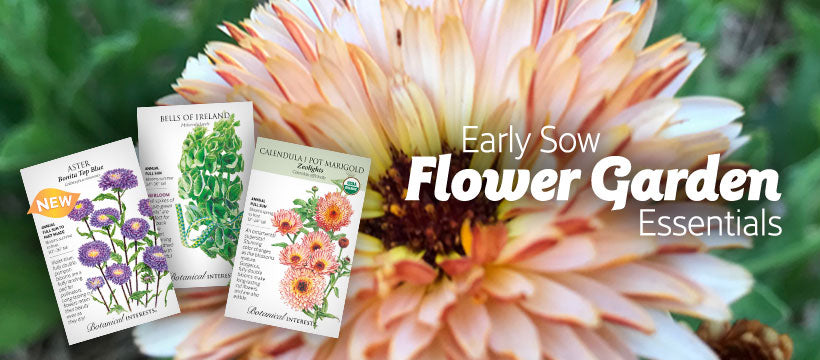Here's a simple recipe for dyeing wool yarn with flowers. You can pick the flowers when their color is at its peak, de-stem, and use them right away, or you can enjoy the blooms until they get a bit tired and then pick, de-stem, and pop into the freezer (until a cold, grey winter day). It's very difficult to match outcomes of different dyebaths, even with the same type flower; much depends upon the freshness of the petals, the weather, astrology--it's not a science. Have fun, enjoy, and be sure to dye enough yarn for your project. Adjust your measurements by multiplying up or down from my recipe.

Supplies
- One skein 100% natural wool yarn: 3.5 oz (100 gm)
- 2 tablespoons alum (aluminum potassium sulfate; this is grocery store pickling alum)
- 1 tablespoon cream of tartar (this can be omitted if you don't have it on hand, but it helps the alum set the color)
- 6 cups of flower petals (see below for suggested varieties)
Directions
- Prepare the wool. Gently hand wash the skein of wool in lukewarm water with neutral soap. (I use Synthrapol.) Although this is referred to as "scouring", be very gentle with the yarn.
- Prepare the mordant* bath. Add 1 cup of boiling water to the alum and cream of tartar. Fill a pot with enough water to cover the yarn, add the mordant and the yarn, and simmer gently for 1 hour. Remove yarn, rinse, and either hang dry to use later or pop into the dyebath.
- Meanwhile, prepare the dyebath. Put flower petals into a pot and double the volume with water. For 6 cups of petals, use 12 cups of water. It does not have to be exact. Simmer for 1 hour. Strain.
- Dye your yarn. Heat the dyebath to a gentle simmer, add the yarn, which has been wetted, and simmer for 1 hour, stirring occasionally and gently. Let the yarn cool in the dyebath. The longer the yarn is in the dyebath, the darker the color. (I've let yarn sit overnight.) Rinse, wash gently with neutral soap, and hang in the shade to dry.

Try any of these Botanical Interests' favorites for creating natural dye.
- Blue Boy Bachelor's Buttons
- Common Sorrel
- Spinach
- Rudbeckia
- Lavender
- Crimson clover cover crop
- Most sunflowers (not Mexican Torch or Vanilla Ice)
- Onions (skins)
- Celery (leaves)
- Carrot (roots)
- Coreopsis
- Hollyhocks
- Beets (roots)
- Marigolds (flowers)
- Calendula (flowers)
* A mordant (the word is derived from Latin, meaning "to bite") is simply a process that helps the dye stick to the yarn, reducing color fade and color bleed. The mordant you use (e.g., alum, vinegar, salt, chrome, tin, iron) affects the color, and my preference is to use alum because it is safe, in the pantry, and does not smell. It is not necessary to use a mordant, especially when dyeing with berries and some vegetables, but it's a good idea if you want to ensure lasting color.

